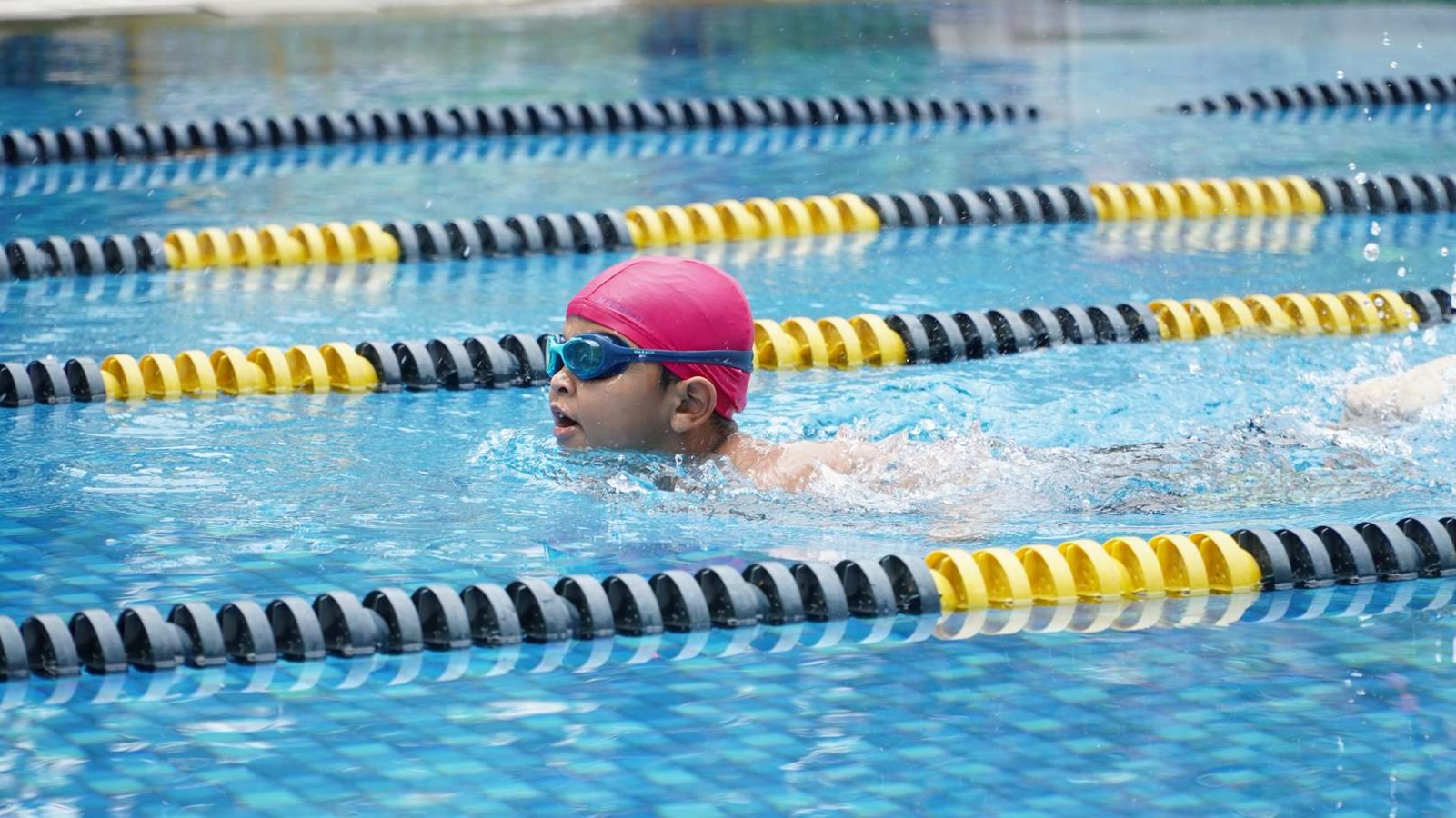Understanding the Dolphin Kick For Faster Swimming

Dolphin kick is one of the most exciting and fastest techniques in competitive swimming. The dolphin kick is your golden ticket to swim faster and more efficiently.
In this guide, we’re going to dive deep into what the dolphin kick is, what muscles are used, and how you can perfect your own dolphin kick to swim like a champion. Ready? Let’s make a splash!
What is the Dolphin Kick?
The dolphin kick is a swimming technique that mimics the movement of a dolphin’s tail as it swims through the water. It’s an undulating, wave-like motion that starts from the chest or hips and flows all the way down to the feet.
This technique is most famously used in the butterfly stroke, but it's also a critical component of underwater phases in freestyle, backstroke, and even breaststroke starts and turns.
Swimmers use the dolphin kick primarily underwater because it's faster than swimming on the surface due to reduced drag. Elite swimmers like Michael Phelps have mastered this technique, using it to their advantage in races to get ahead of the competition.
Muscles Used in the Dolphin Kick
The dolphin kick might look graceful, but it’s powered by some serious muscle engagement! Here are the key muscle groups that get activated when performing a strong dolphin kick:
A. Core Muscles (Abs and Lower Back)
Your core is the engine of the dolphin kick. The movement begins with your core, creating the wave-like motion that travels down your body. This includes:
- Rectus abdominis (your six-pack muscles)
- Obliques
- Erector spinae (lower back)
B. Hip Flexors and Glutes
Your hip flexors help to initiate the motion from the hips, while your glutes provide power during the downbeat of the kick. These muscles are essential for generating strong, quick, and controlled movements.
C. Quadriceps and Hamstrings
These leg muscles help in stabilizing and controlling the motion of the upper legs during the kick. Quads are especially used during the downward motion, while hamstrings help in recovery.
D. Calves and Ankles
Your calf muscles and flexible ankles allow you to finish the dolphin kick with a strong whip-like snap from your feet.
Tips to Perfect Your Dolphin Kick
Improving your dolphin kick is all about mastering the technique, building the right muscles, and developing a smooth rhythm. Here are pro-level tips that will help you level up your underwater glide:
1. Engage Your Core First
One of the most common mistakes swimmers make is thinking the dolphin kick starts from the legs. Nope! The power comes from your core muscles which are your abs and lower back. If you try to kick only from the knees, your motion will look jerky, and you’ll lose speed.
Here’s what you can do on land: Stand up straight and practice undulating like a dolphin which initiates the wave from your chest and lets it roll down your body. It’ll feel silly at first, but it helps you understand where the motion begins!
2. Stretch and Strengthen Your Ankles
Your ankles play a huge role in finishing each kick with a smooth and snappy motion. Tight or stiff ankles will slow you down and break your flow. Flexible ankles help you “whip” the water better, making your dolphin kick more powerful.
Add ankle stretches to your routine. Like sitting with your legs extended and pointing your toes, or using a resistance band to gently pull your foot into a stretch.
3. Train with Fins
Using swim fins can make your dolphin kick feel more exaggerated and help you better understand the motion. They also give you more propulsion, so you can focus on body movement and rhythm without feeling like you’re sinking.
Try doing 4x25-meter dolphin kick sets with short fins. Go slow and focus on the wave motion.
4. Use a Kickboard… or Go Vertical!
When you swim with a kickboard, you can isolate your lower body and focus on the dolphin kick without worrying about arm movement or breathing technique. Want an even better challenge? Try vertical dolphin kicks in deep water. It forces your body to stay upright using only your core and legs.
In the deep end of the pool, cross your arms over your chest, keep your head above water, and perform dolphin kicks vertically for 10–20 seconds. Rest and repeat. It’s a fantastic core workout!
5. Watch Yourself on Video
What you feel you’re doing in the water doesn’t always match what you’re actually doing. A video of your dolphin kick can show if your knees are bending too much, if your kick is too big or uneven, or if your toes are flexing instead of pointing.
Ask a coach, friend, or parent to film you underwater or from the side of the pool. Then analyze your form frame-by-frame.
What to Look For:
- Is your body in a straight line?
- Are your feet together?
- Is the wave smooth, not choppy?
6. Kick Both Ways – Up and Down
A lot of swimmers focus only on the downbeat of the kick (the push down), thinking that’s where all the power is. But the upbeat (bringing your legs up) is equally important for maintaining rhythm and propulsion.
In vertical dolphin kicks, consciously push hard down and also snap your legs up quickly. Count how many kicks it takes to stay afloat.
7. Do Core Workouts Regularly
Because the dolphin kick is driven by your core, strengthening your abs and lower back will make your movement more powerful and efficient. Dryland exercises (aka workouts outside of the pool) are perfect for this.
Must-Try Core Moves:
- Planks (30–60 seconds)
- Superman holds
- Russian twists
- Leg raises
8. Breathe Right
Since dolphin kicks are often used underwater after starts and turns, holding your breath and staying relaxed are key. If you panic or tense up, you’ll slow down and break the flow. Improving your breath control helps you stay underwater longer and stay streamlined.
Ready to Improve your Swimming Skills?
If you want your children to become stronger, faster, and more confident swimmers, then mastering techniques like the dolphin kick is just the beginning. As parents, you are encouraged to enroll your children in the Swimming Program at Rockstar Academy.
We are the best Sports & Performing Arts Academy which offers a wide range of fun, challenging, and skill-building physical activity programs. At Rockstar Academy, your child will thrive in a structured curriculum that includes exciting events like RockOlympics, an amazing learning experience where students can showcase their talents and discover their true potential.
Looking for something even more personalized? Rockstar Academy also offers Private Instruction Programs tailored specifically to your child's unique goals and needs. With one-on-one training, real-time feedback from instructors, detailed progress reports, training videos, and weekly at-home exercises, your child gets the focused attention they need to grow and excel in their swimming journey.
Ready to take the plunge? Come and experience it yourself since we offer a free trial class, so your child can dive into the Rockstar experience with zero pressure and maximum fun. Let their swimming success story begin today at Rockstar Academy!
FAQ
Can beginners learn the dolphin kick easily?
Yes! It may feel strange at first, but with practice and good coaching, anyone can learn it. Start slow, break down the movement, and gradually build up speed and rhythm.
How many dolphin kicks should I do off the wall?
According to swimming rules, swimmers can use up to 15 meters of underwater dolphin kick after the start and each turn. Most elite swimmers use 5–8 kicks depending on the event and personal preference.
Why do my knees bend too much when trying dolphin kicks?
This is a common beginner issue. It means you’re trying to kick from your knees instead of using your core and hips to lead the motion. Focus on initiating the wave higher up your body.



